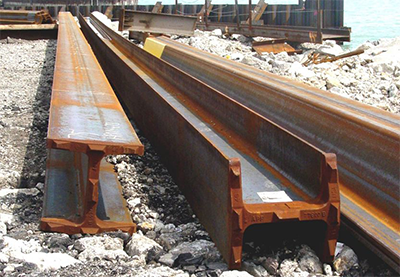Rebound hammer test on concrete
Rebound hammer is a non-destructive test used to examine the hardened concrete. The principle of the rebound test is based on the rebound of a plunger. The plunger of the rebound hammer is pressed against a concrete surface. The hammer mass will be pushed back and secured to a pin. The impact spring is attached to the hammer mass, so it will be extended with the hammer mass. Then the hammer mass is released.finally, the mass will rebound against the concrete surface, as shown in figure no:1. The surface hardness and compressive strength will be correlated with the rebound of the spring controlled mass.
A rebound hammer can be used to evaluate the compressive strength of a concrete member, quality of concrete, and uniformity of concrete. The approximate impact energy required for the rebound of the hammer for different applications is shown in table no:1.
The manufacturers of the rebound hammer will provide a typical conversation curve like the one shown in figure no:3. The average 6 reading will be used to determine the compressive strength of a concrete member from the conversation curve given by the manufacturers. In general, the rebound magnitude will increase by the increase of concrete compressive strength. However, it is affected by various parameters such as type of cement, type of aggregate, surface condition, curing, and age of concrete and others.
Rebound hammer test can be used as an indicative test. It can not be used as a substitute to cube or cylinder compression tests under any condition. Moreover, the test will evaluate the compression strength for limited depth of concrete from the surface. The internal cracks, flaws, etc. or heterogeneity across the cross-section will not be indicated by rebound numbers.
Figure 1
Figure 2
A rebound hammer can be used to evaluate the compressive strength of a concrete member, quality of concrete, and uniformity of concrete. The approximate impact energy required for the rebound of the hammer for different applications is shown in table no:1.
Table 1
The procedure of conducting the rebound test will begin by the calibration of the test instrument. The rebound hammer will be calibrated against a test anvil with known Brinell hardness of 5000 N/mm2. After the calibration of the rebound hammer, the test can start. before conducting the test, we should verify the following points:
- The concrete surface should be smooth, clean, and dry.
- Any loose particles should be rubbed off from the concrete surface with a grinding wheel or stone before hammer testing.
- Rebound hammer test should not be conducted on rough surfaces as a result of incomplete compaction, loss of grout, spalled, or tooled concrete surface.
- The point of impact of rebound hammer on the concrete surface should be at least 20mm away from edge or shape discontinuity.
- Six readings of rebound numbers are taken at each point of testing, and an average of the value of the readings is taken as a rebound index for the corresponding point of observation on a concrete surface.
The manufacturers of the rebound hammer will provide a typical conversation curve like the one shown in figure no:3. The average 6 reading will be used to determine the compressive strength of a concrete member from the conversation curve given by the manufacturers. In general, the rebound magnitude will increase by the increase of concrete compressive strength. However, it is affected by various parameters such as type of cement, type of aggregate, surface condition, curing, and age of concrete and others.
Figure 3



















Comments
Post a Comment